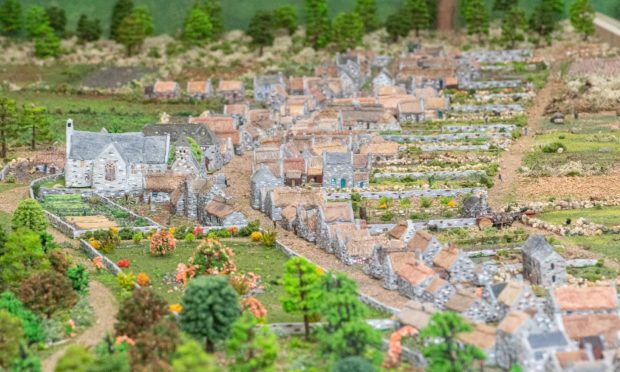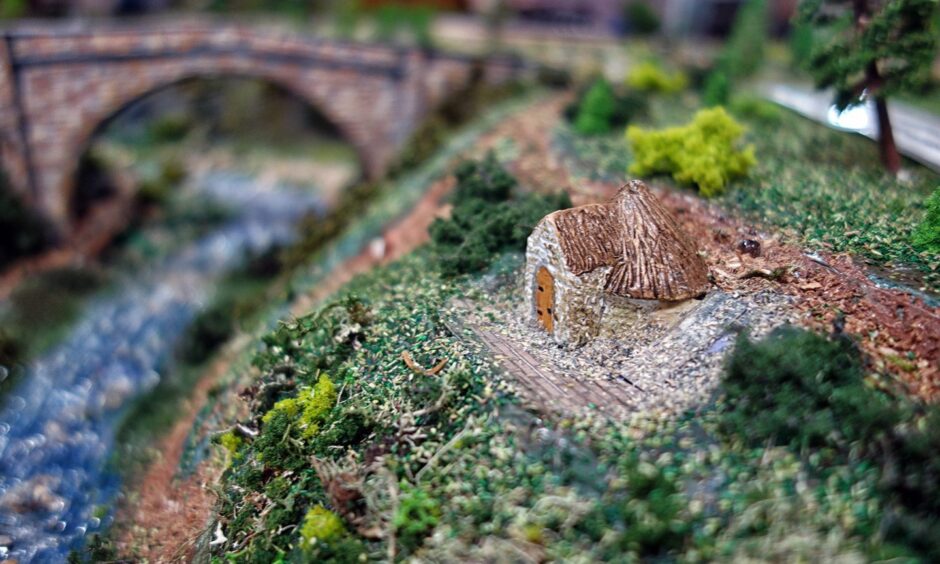Stunning new additions to a model of Old Cullen have been revealed to showcase more secrets from the forgotten community.
Today the costal town is one of the most popular tourist destinations on the Moray Firth coast with enviable sea views.
What many people don’t know though is the community was originally about a mile further inland, before it was completely demolished and rebuilt about 200 years ago.
Only isolated walls and outlines of buildings remain of what was once a bustling community dating from the 13th Century.
History enthusiasts from the Cullen, Deskford and Portknockie Heritage Group unveiled the incredibly detailed model of the heart of Old Cullen last year.
Now they have added more to the exhibit to tell more stories from the forgotten community.
Long lost industries revealed in Old Cullen model
New additions to the Old Cullen model include a range of industries that the townsfolk would have depended on for work.
The workplaces previously operated along the valley of the Cullen Burn.
Industries of the time included mills, manufacturing sites for bricks, textiles and tiles, snuff production from tobacco and a tannery.
There are even racks of tiny animal skins drying outside the tannery as if waiting to be transformed into leather.
The centrepiece of the model though is the recreation of Cullen House as it would have appeared when Old Cullen still stood.
The stately home was extensively remodelled between 1858 and 1868, about 30 years after the community was moved from its doorstep.
No reliable images of the building exist from the period meaning extensive research has been done by the Cullen, Deskford and Portknockie Heritage Group to establish a likely recreation.
Next to Cullen House can be seen the gardens as well as the laundry and ice house that would have served the home.
Why was Cullen moved?
The earliest records of Cullen date from mentions of the town’s Auld Kirk in the early 13th Century.
In fact, the church is the only part of the former community that did not make the move and still stands today where it did at the heart of the old town.
By the time Robert Burns visited Cullen in 1787 the area was in decline. During a tour of the north-east the Bard wrote “the country is sadly poor and unimproven”.
It is around this time that Cullen was moved to where it is today, although the Seatown was already an established fishing community.
It is believe the Earl of Seafield at the time had grown wearisome of the noise, mess and traffic on his doorstep at Cullen House.
Homes in the new community were built with running water and sanitation, which was a significant upgrade on what they had before.
How Old Cullen model has boosted local tourism
The model devised by the Cullen, Deskford and Portknockie Heritage Group and created by US-based master modeller John Czajkowski is on display at the Cullen Heritage Centre.
It was unveiled last year with the new additions added in time for this year’s summer season.
Heritage group president Brenda Wood revealed visitor numbers to the Heritage Centre increased by 50% last year with donation per visitor also increasing by 30%.
She said: “We’ve been overwhelmed by the amount of interest.
“And by people’s generosity – the increased donations have helped us improve our facilities and run more activities.
“Most importantly, though, the model has caught the imagination of visitors and locals alike. It’s been wonderful to see so many people engaging with the history of our wee town.”
Cullen Heritage Centre is open daily Thursday to Tuesday from 10.30am to 4.30pm. Free admission, donations welcome.






Conversation